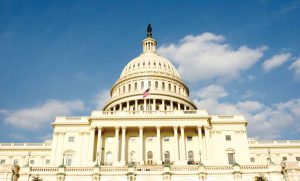Aaron Brown
The debt ceiling is one of those perennial issues in US politics that occasionally rises to a major concern. The ceiling has been raised, suspended or adjusted 28 times since 1993, usually with little drama. But there were major fights in 1995, 2011 and 2013 that led to extended government shutdowns and concern the US would default on its debt obligations. If the Republicans gain control of Congress in the November midterm elections, some people predict another fight over the debt ceiling in early 2023. Financial markets quickly shrugged off the effects of previous battles, but this time might be different.
The fundamental issue is that Congress loves spending and tax cuts, but dislikes debt. That leads to conflicting legislation: spending and tax bills inconsistent with the debt limits it sets. This is not a Democrat versus Republican issue. Democrats from fiscally liberal places can get re-elected without worrying about debt, and Republicans from fiscally conservative places will never lose elections by opposing debt. It’s centrists in both parties who need votes from both fiscal liberals and conservatives. These are people who want more money from the government and people concerned about preserving the value of the money they already have. Moderate and conservative Democrats don’t want to be seen as reckless spenders forcing debt increases without bipartisan support, and moderate and liberal Republicans don’t want to be blamed for government shutdowns and market instability.
The usual assumption is that the center will hold. The ceiling will eventually be raised or some other workaround will be found, but fiscal conservatives will extract some concessions to reduce spending or tighten budget rules. However, the previous debt ceiling fights took place in good economic times, with rising stock prices and low inflation. Republicans emboldened by election success from criticizing Democratic spending may feel they hold a winning hand to force rollback of expensive Biden administration policies — getting credit for easing inflation and protecting the credit of the US while showing the Democrats to be ineffectual.
I’m no political analyst, so I have nothing more to say about that. My topic is the likely market reaction if there is a bruising fight. Will the possibility of default send the US dollar and bond market into meltdowns as nearly happened (and may still happen) in the UK? Or will increased fiscal discipline in the US stabilize markets?
One clue is that Treasury bill rates from mid-January 2023 to mid-April are as much as 0.5% higher than you would expect given earlier and later maturities.
—Bloomberg
 The Gulf Time Newspaper One of the finest business newspapers in the UAE brought to you by our professional writers and editors.
The Gulf Time Newspaper One of the finest business newspapers in the UAE brought to you by our professional writers and editors.
